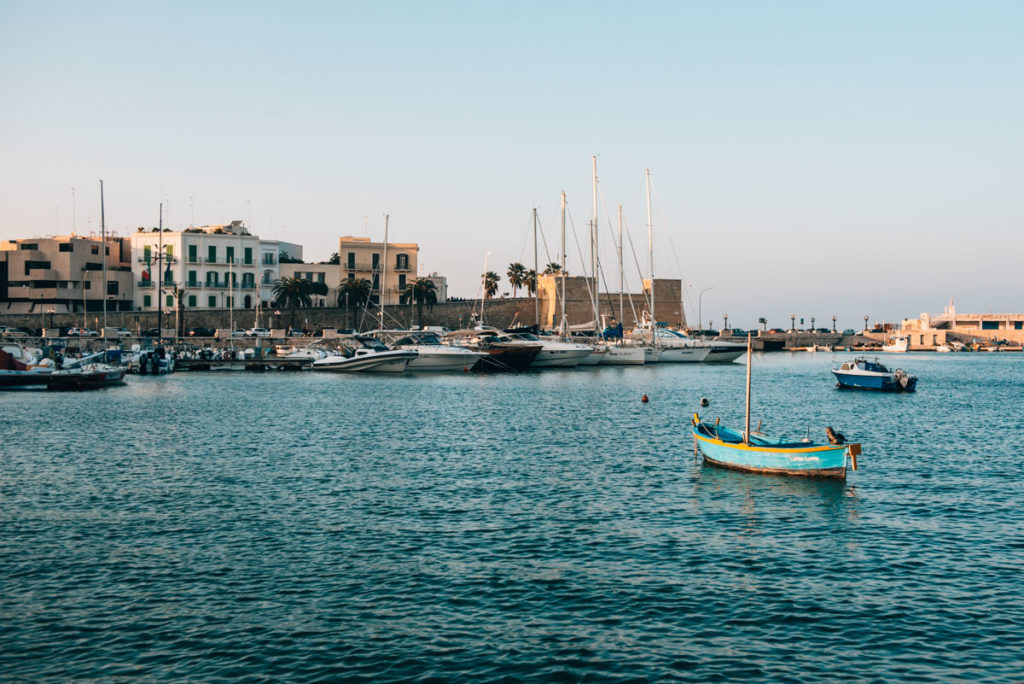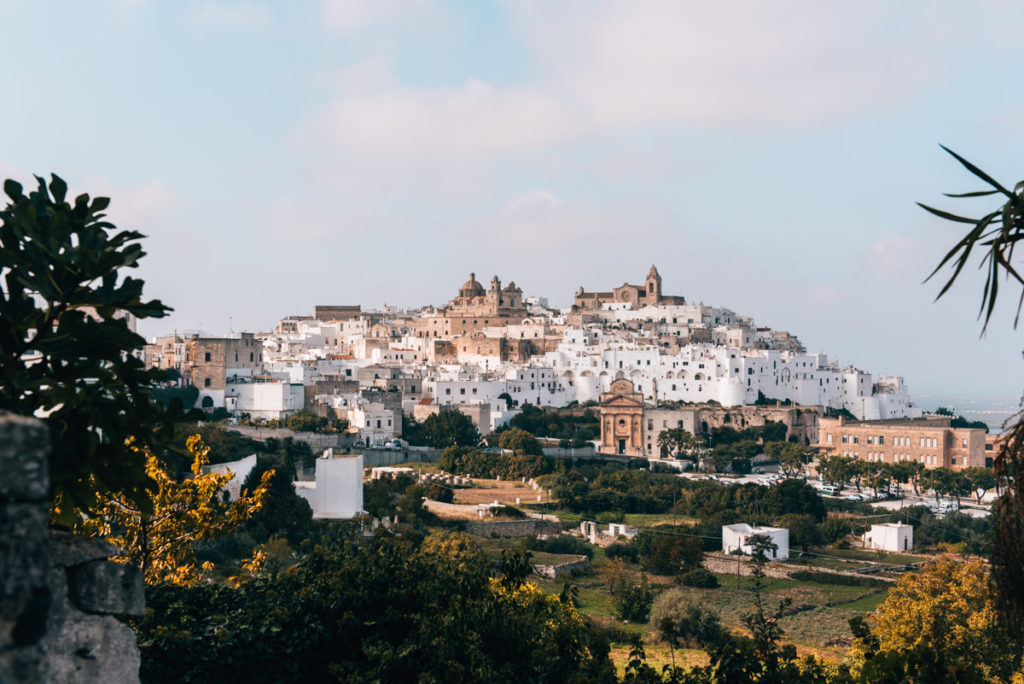Hello, postcard vibes! It’s impossible to think of Puglia without instantly picturing the iconic Trulli. These tiny, round houses made from white limestone with their conical roofs stand out in the landscape of Valle d’Itria like pointed caps.
The “Trulli capital” of Valle d’Itria is Alberobello. This place definitely has the highest concentration, and the most beautiful, of these typical stone houses. A heads-up: Alberobello is very (!) touristy, but more on that shortly.
Beyond the Trulli, there’s much to discover in Valle d’Itria. To be honest, we found the other towns, like the Baroque city of Martina Franca, almost more appealing.
Valle d’Itria is perfectly for a day trip. In this blog post, we’ll show you what to expect on your mini road trip and share our personal tips for Alberobello, Locorotondo, and more.
Inhalt
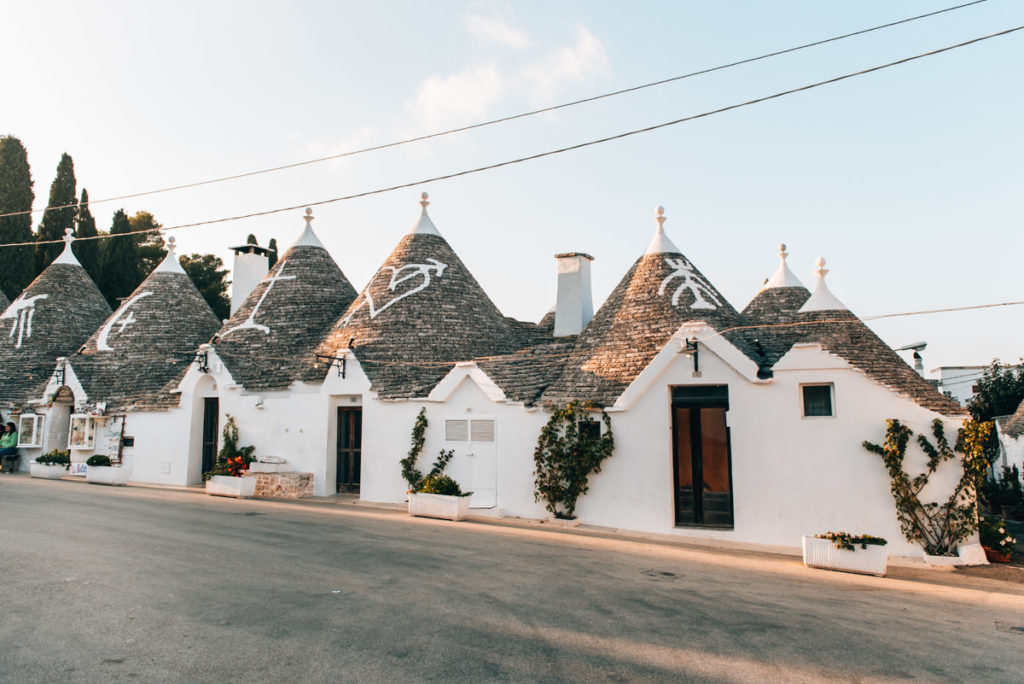
1. Valle d’Itria: Essential Information for Your Day Trip
Valle d’Itria: Facts & Info
- Valle d’Itria, also known as the Itria Valley, is located in the heart of Puglia and mainly covers the municipalities of Locorotondo, Cisternino, and Martina Franca. Parts of Ostuni and Alberobello are also considered part of Valle d’Itria.
- Aptly named the “Valley of the Trulli”, the cone-shaped roofs of these unique dwellings stand out like pointed caps between olive groves and vineyards.
- The most beautiful Trulli can be found in Alberobello. Only here entire districts are composed of these characteristic cone houses. Therefore, the Trulli of Alberobello are considered UNESCO World Heritage.
- In other towns within Valle d’Itria, Trulli are rare, but there are other impressive attractions. For instance, in Martina Franca, you can admire beautiful Baroque buildings.
History of the Trulli’s Origin
You might wonder (just as we did) how these curious, pointed-cap houses in Valle d’Itria came to be? Well, it’s not entirely clear.
The first Trulli in Puglia were likely built around the 14th to 15th century, originally serving rural purposes (e.g., grain storage). It’s believed that the first Trulli were inspired by similar structures from Turkey.
In the 17th century, Count Giangirolamo II. Acquaviva d’Aragona is said to have ordered the construction of Trulli in Valle d’Itria. The reason: he wanted to avoid paying taxes and instructed building without mortar, so the Trulli could be quickly dismantled in case of inspections. Whether this legend is true or not, today, most Trulli house charming holiday apartments, restaurants, or souvenir shops.
Ostuni: Starting Point for Our Day Trip
Ostuni is an ideal base for exploring Valle d’Itria. It’s one of the most beautiful cities in Puglia and offers a stunning location with views of the sea.
We stayed at the magnificent Masseria Dagilupi. A Masseria is what they call an old, renovated farmhouse. In the case of Masseria Dagilupi, you’ll be staying in a historic olive mill that has been restored with incredible eye for detail.
Situated just outside Ostuni, in a tranquil setting surrounded by hundreds of ancient olive trees, the Masseria offers a breathtaking view of Ostuni from its roof – a truly idyllic spot.
You can book the accommodation here: Masseria Dagilupi
Here you can find our detailed travel guide: Ostuni Tips

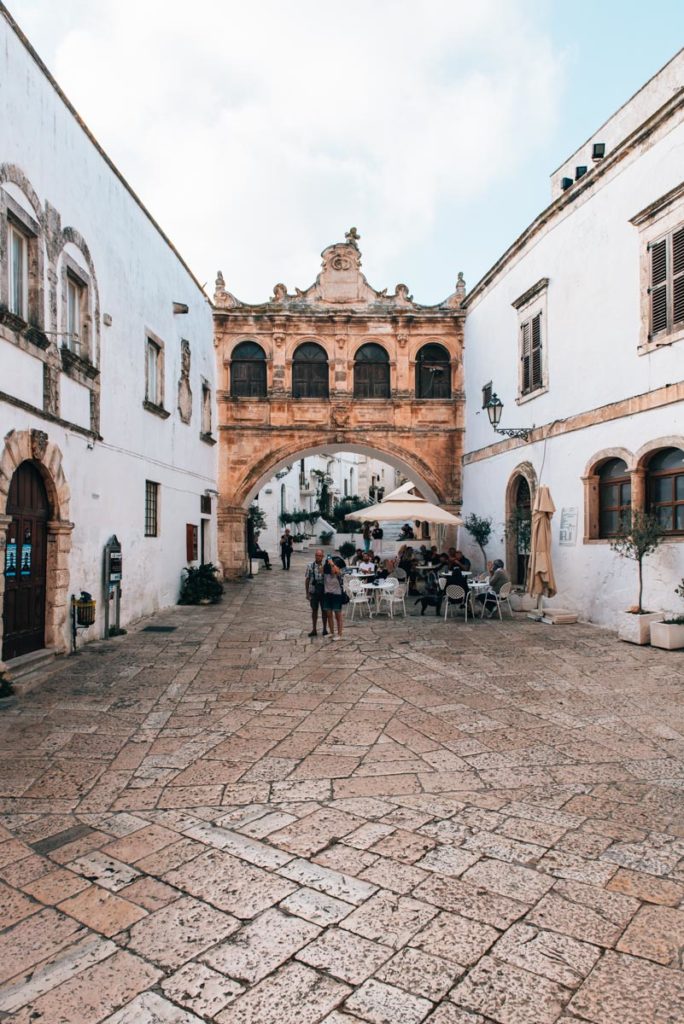
Car Rental & Parking
For your day trip through Valle d’Itria, we highly recommend renting a car – as we would for all of Puglia. While the individual towns are connected by bus, traveling by car offers much more flexibility.
We usually book our rental car through Sunny Cars. For more tips on renting and driving in Puglia, check out this blog post: Road Trip Puglia.
You can search for cheap rental cars here: Sunny Cars
Finding a parking spot during our day trip in the off-season was fairly easy in all the towns of Valle d’Itria. We mostly found a spot right on the street near the historical centers. We’ll share our parking tips for each location in the respective chapters.
An important note: When parking along the street, pay attention to the ground markings. Free parking spaces are usually marked with white lines, while paid ones are marked with blue lines. In blue zones, you’ll find parking meters where you can get a ticket.
However, be mindful of the signs. Often, there are certain times of the day or even seasons when you can park for free.
Tours in Alberobello
Are you looking for unique experiences in Alberobello? Guided tours are the best way to explore the town off the beaten path. We can recommend these tours.
2. Cisternino
The first stop on our day trip through Valle d’Itria is the small village of Cisternino. It’s listed among the “borghi più belli d’Italia”, the most beautiful places in Italy, just like Ostuni, Locorotondo, and Alberobello.
What immediately stands out in Cisternino’s old town: mirrors and swings can be found on every corner. It might sound a bit unusual, but once you’re there, this artistic flair fits perfectly with Cisternino.
It’s best to just wander around. We recommend the following attractions and noteworthy places in Cisternino:
- Villa Comunale Giuseppe Garibaldi Viewpoint: A small park with a terrace offering a nice view of the surrounding landscape.
- Torre dell’Orologio at Piazza Vittorio Emanuele II: This hidden square hosts the historic clock tower of Cisternino.
- Corso Umberto: A pleasant street on the eastern end of the old town with pretty houses and a few shops.
Cisternino is tiny, so you won’t need more than an hour to stroll through the old town. In the off-season, we easily found a parking spot on Via Roma.





3. Locorotondo
Just a brief ten-minute drive from Cisternino, lies the next destination of your day trip through Valle d’Itria: Locorotondo. Personally, Locorotondo reminded us a lot of Cisternino, though it’s slightly more tourist-oriented and “well-groomed”.
Locorotondo translates to “round place”, and indeed, the village is circular in layout. Admittedly, this is easier to appreciate from the air than from the ground.
Here are some specific tips for Locorotondo:
- Viewpoint at Parco Communale: A small park on the edge of the old town offering a nice view over Valle d’Itria.
- Porta Napoli & Piazza Vittorio Emanuele II: Opposite the small park, the Porta Napoli leads into the old town. Here, you’ll also find the tourist information center.
- Chiesa Madre San Giorgio Martire: The most important church in Locorotondo.
- Palazzo Morelli: A historic Baroque palace located in a picturesque alley.
- L’Arco dei Tipici: This tiny, quite authentic delicatessen offers delicious small bites to eat – like Burrata, cheese, or charcuterie boards.
For Locorotondo, we also recommend allocating about an hour for your city tour. We parked our car on Via Cisternino during the off-season.
One more tip for the journey onwards: From the road towards Martina Franca (SS 172), you’ll get a lovely view back towards Locorotondo. It’s worth stopping for.


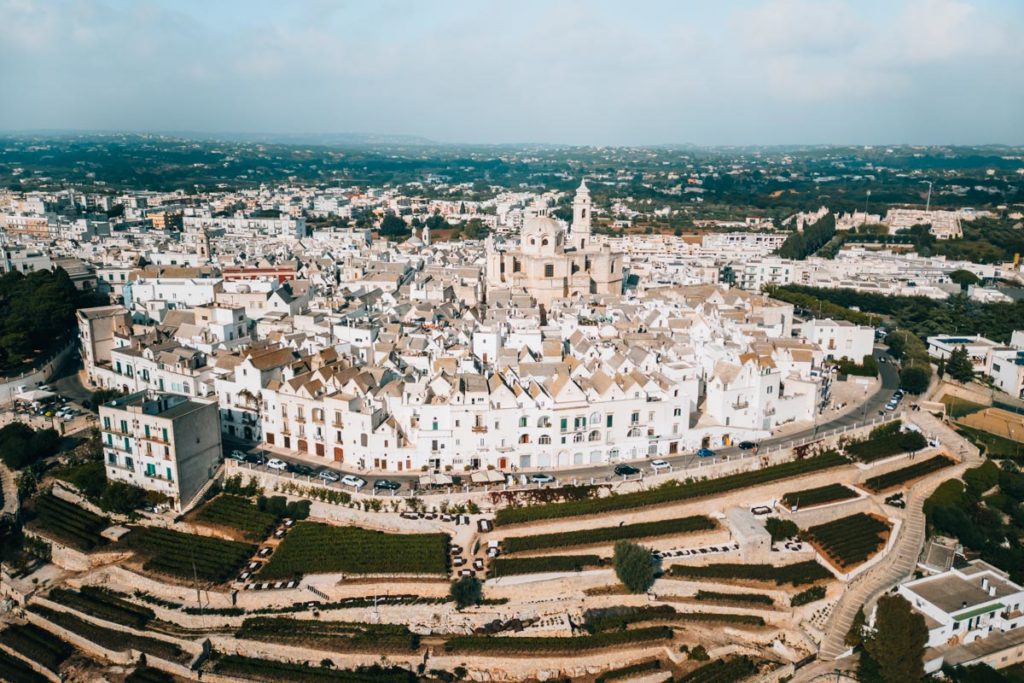


4. Martina Franca
Martina Franca stands out from the rest. Unlike other places in Valle d’Itria, here you’ll find a beautiful Baroque city with impressive and notable buildings. Initially, we considered skipping Martina Franca, but in hindsight, are very glad we didn’t.
Martina Franca is lively, authentic, and very charming. It reminded us a bit of Lecce, though Martina Franca is considerably smaller.
We recommend these attractions and noteworthy places for your visit:
- Piazza XX Settembre & Porta di Santo Stefano: This spacious square, lined with bars and cafés, leads through the historical city gate into the old town of Martina Franca.
- Palazzo Ducale: A 17th-century Baroque palace that houses the city administration and a museum. With over 300 rooms, it’s one of the largest buildings in Puglia.
- Basilica di San Martino: It is known as the most important church in Martina Franca. The square in front of this beautiful Baroque church, Piazza Plebiscito, with its pretty clock tower, is quite worth seeing.
- Piazza Maria Immacolata: In our opinion, the most beautiful square in Martina Franca, with its unique oval arcade.
We spent a good hour in Martina Franca without feeling rushed. We parked at Piazza Umberto I., which offers several parking spaces and is just a short walk from the old town.


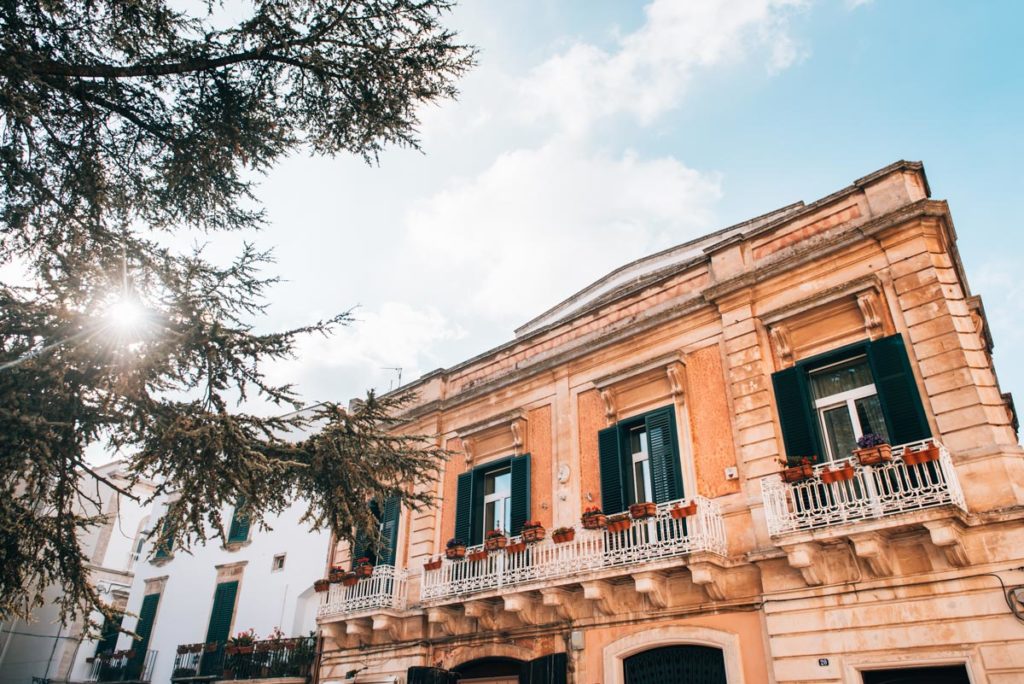


5. Alberobello
Last but not least: the most famous and by far the most visited place in Valle d’Itria – Alberobello. We deliberately chose the late afternoon for our visit and would, no doubt, do it again. It’s still incredibly busy then, but the crowds were still manageable during our off-season visit.
Alberobello is, in a sense, the “Trulli capital” of Puglia. Entire districts here are made up exclusively of Trulli. As you can imagine, it makes the cityscape very picturesque, if you can overlook the countless souvenir shops. Entire streets are filled with them.
Here are some recommendations and tips for your visit:
- Rione Monti Quarter: Up the Via Monte San Michele, you head slightly uphill into the most touristy part of Alberobello. The photogenic Trulli line up like pearls on a string. Almost all of them house small souvenir shops or stores.
- Rione Aia Piccola Quarter: The much quieter and more relaxed contrast to the touristy district. This neighborhood on the hill on the other side of the main street is less “spruced up,” but we preferred it here.
- Viewing Terrace at Santa Lucia Church: A popular spot for a slightly elevated view of the many Trulli.
- View at “Villa Comunale Belvedere Parco” Park: Our personal favorite spot in Alberobello with, in our opinion, a much better view of the Trulli. We were here for sunset.
To comfortably explore Alberobello, we recommend setting aside a good hour. There are numerous paid parking spots around the old town. We parked at the parking lot on Via Indipendenza.


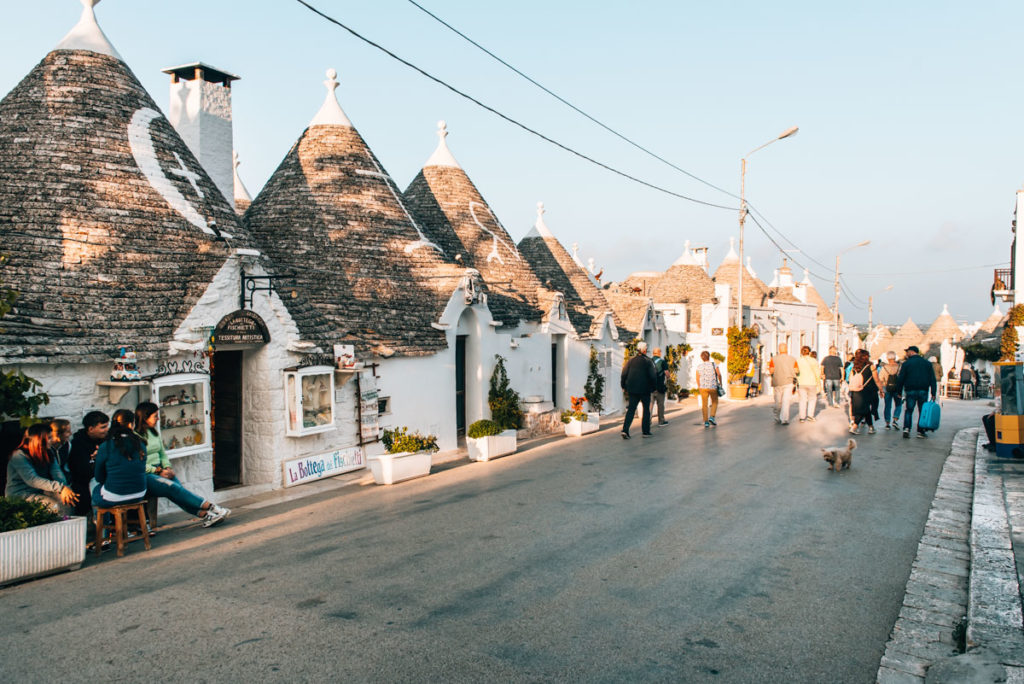


Disclaimer: Affiliate Links
This travel guide contains our personal recommendations in the form of affiliate links. Which means if you book or purchase something via these links, you still pay the same (nothing changes for you) — while we receive a small commission for sharing! So it really means a lot to us and we want to say a massive thank you from us both!
Have you ever been to Alberobello or another place in Valle d’Itria? How did you like it? We’re really looking forward to hearing about your experiences and additional tips in the comments below!
